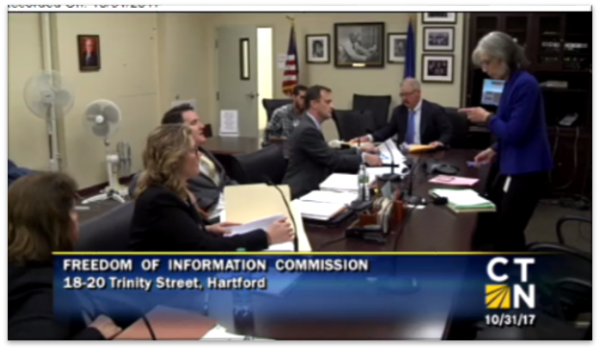State Budget Woes Impacting Nonprofits, Grantmakers
/The impact of the state’s ongoing fiscal crisis is reverberating through the state’s nonprofit community. The Connecticut Council for Philanthropy (CCP), in a recent survey, found that about 25 percent of nonprofits answering the survey are currently responding to the state’s fiscal crisis. The vast majority of these grantmakers, responding with increased grant support to non-profit organizations. Some grantmakers, about 33 percent, are supporting conversations about non-profit mergers. And a smaller number, about 20 percent each, are offering learning programs and/or advocating.
The survey results were shared in the CCP’s latest newsletter by president Karla Fortunato.
In analyzing the survey responses, CCP reports that many more foundations, about 44 percent of respondents, report that they plan to respond to the state's fiscal crisis. Again, the majority, about 50 percent, are planning to increase their grant support to non-profits. Even more, 57 percent, report they will support conversations about non-profit mergers, and still others, 42 percent, will offer learning programs to non-profits. A smaller number, 21 percent, plan to advocate or lobby.
“We think that the time is now to bring the philanthropic community together - to deepen our collective understanding of the current fiscal crisis, projections for out-years, and what roles philanthropy can play to mitigate short-term pain, to support evolution in the state's non-profit landscape, and to start developing longer-term strategies,” Fortunato said.
Most respondents reported that they are hearing from their grantees and that many of them are adjusting their work based on the state budget. Among the actions being taken: cutting programs and services, requesting bridge loans or gap funding, reducing or laying off staff, dipping into reserves, and reducing staff. Concerns are also being raised about potential tax law changes that would impact nonprofits and concerns about meeting current needs, or possible reversal of past gains in providing services. Grantees also report hearing from organizations seeking support that had not requested support previously, being driven by state cutbacks or anticipated cutbacks.
While many respondents noted that they are having conversations internally at their organizations or with their colleagues, most acknowledged that more information is needed and more conversations need to be had. They noted that discussions among foundations, and in collaboration with nonprofits or other partners, are critical. Fortunato reported that suggestions for CCP leadership highlighted three areas of focus, described as advocacy, inform and convene.

Advocacy includes helping to organize a unified response; advocating for a responsible, equitable budget; and making sure legislators understand that philanthropy cannot fill government's gaps. CCP members also look to the organization to keep them up-to-date on budget matters and other policies impacting nonprofits, sharing what others are doing, and exploring and sharing possible solutions. They also look to CCP to convene forums to deepen understanding; bring nonprofits together to learn together what funders can consider doing; and help nonprofits understand what is needed immediately to mitigate short-term harm and assist in the development of a long-term strategy.
Fortunato joined CCP in May as the organization's president, after 13 years at the Health and Environmental Funders Network (HEFN), a national alliance of 60 philanthropic organizations based in Rockville, Md. At her departure from HEFN, the organization commended her "professionalism, pragmatism, and persistence" in advancing and extending the organization's mission and objectives.






 The safest states cited in the study include South Dakota, North Dakota, West Virginia and Maine, with Vermont ranking as the safest at #51. The worst states were California, Florida, Nevada, Texas, New Mexico, New York, Arizona and Virginia.
The safest states cited in the study include South Dakota, North Dakota, West Virginia and Maine, with Vermont ranking as the safest at #51. The worst states were California, Florida, Nevada, Texas, New Mexico, New York, Arizona and Virginia.

 The mission of the Jordan Porco Foundation, a 501(c) (3) public charity, is to prevent suicide, promote mental health, and create a message of hope for young adults. They accomplish this by providing engaging and uplifting peer-run programs. Their programs strive to start a conversation about mental health that reduces stigma while encouraging help-seeking and supportive behaviors.
The mission of the Jordan Porco Foundation, a 501(c) (3) public charity, is to prevent suicide, promote mental health, and create a message of hope for young adults. They accomplish this by providing engaging and uplifting peer-run programs. Their programs strive to start a conversation about mental health that reduces stigma while encouraging help-seeking and supportive behaviors.



 Michelle Hargrave, Deputy Director at the NBMAA, said, "The New Britain Museum of American Art is thrilled to partner with CRIS Radio in this endeavor to bring greater accessibility to the institution. The Museum is committed to being a welcoming, dynamic, distinguished, and educationally ambitious art museum, and we are very excited that this opportunity will open our galleries to a broader audience."
Michelle Hargrave, Deputy Director at the NBMAA, said, "The New Britain Museum of American Art is thrilled to partner with CRIS Radio in this endeavor to bring greater accessibility to the institution. The Museum is committed to being a welcoming, dynamic, distinguished, and educationally ambitious art museum, and we are very excited that this opportunity will open our galleries to a broader audience."

 A synthetic turf study was undertaken in 2016 by four United States agencies — EPA, Consumer Products Safety Commission, the Centers for Disease Control and Prevention/Agency for Toxic Substances and Disease Registry — which has yet to be finalized.
A synthetic turf study was undertaken in 2016 by four United States agencies — EPA, Consumer Products Safety Commission, the Centers for Disease Control and Prevention/Agency for Toxic Substances and Disease Registry — which has yet to be finalized. Blumenthal first became concerned about the artificial surface when his children were playing on the crumb-rubber athletic fields. “I became concerned as a parent, as much as a public official, ten years ago, and at first was somewhat skeptical, but now very firmly believe that we need an authoritative, real study about what’s in these fields,” Blumenthal told ABC News two years ago.
Blumenthal first became concerned about the artificial surface when his children were playing on the crumb-rubber athletic fields. “I became concerned as a parent, as much as a public official, ten years ago, and at first was somewhat skeptical, but now very firmly believe that we need an authoritative, real study about what’s in these fields,” Blumenthal told ABC News two years ago.
 Once underway, the new daily service will mean that from New Haven to Hartford, trains will increase from six to 17 per day. Between Hartford and Springfield, trains will increase from six to 12 per day. A new station in North Haven station is currently being designed, and is not due to be built and open until 2020. Stations in Enfield, Newington, West Hartford, Windsor and Windsor Locks stations are also part of the Hartford Line plans. Trains will arrive at stations in New Haven, Wallingford, Meriden, Berlin and Hartford every 45 minutes during peak hours and every 60 to 90 minutes during off-peak periods.
Once underway, the new daily service will mean that from New Haven to Hartford, trains will increase from six to 17 per day. Between Hartford and Springfield, trains will increase from six to 12 per day. A new station in North Haven station is currently being designed, and is not due to be built and open until 2020. Stations in Enfield, Newington, West Hartford, Windsor and Windsor Locks stations are also part of the Hartford Line plans. Trains will arrive at stations in New Haven, Wallingford, Meriden, Berlin and Hartford every 45 minutes during peak hours and every 60 to 90 minutes during off-peak periods.

 CPAN’s most recent contact expired in September, was extended through October, and was on a day-by-day basis this week. The 33-person staff worked with an annual operating budget that was unexpectedly reduced by
CPAN’s most recent contact expired in September, was extended through October, and was on a day-by-day basis this week. The 33-person staff worked with an annual operating budget that was unexpectedly reduced by 



























